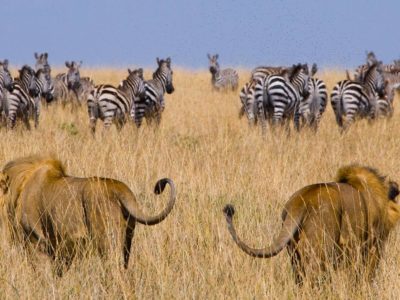Radical transformation needed for sustainable development
By 2050, we will share our planet with an estimated 9 to 10 billion people. IIASA research formed part of a Global Environment Outlook report that details how societies can meet goals to support a healthy planet and growing population, provided they embrace integrated strategies.

© Pop Nukoonrat | Dreamstime
The choices we make today could shape whether the world’s future population has access to fundamental resources like food, water, and energy to support healthy lives. Unless we make significant changes, we could be headed towards a crisis. This message was central to the sixth Global Environment Outlook (GEO6) released at the UN Environment Assembly session in Nairobi, Kenya in March 2019.
The 2019 report was the most comprehensive to date and placed a special emphasis on solutions, laying out steps policymakers, businesses, and individuals can take to fulfill international pledges like the Paris Agreement and the Sustainable Development Goals (SDGs).

Figure: Global maps of estimated and projected total blue water consumption (million m3 yr−1) for (a) 2010 and (b) 2099. The relative change (%) from (a) to (b) is given in (c).
Chapters 21 and 22 of the Outlook, on which IIASA took the lead, provides insights into current and future freshwater concerns, employing multiple models to explore whether current trends across resource areas will allow societies to reach their environment-related SDGs by 2050, and what pathways exist to enable sustainable development.
Chapter 21 concludes that globally, we are not on track to meet these targets. Although there have been some successes, such as reducing hunger and increasing access to safe drinking water, the rate of progress is too slow to meet the world’s projected needs by 2050.
Chapter 22 of the report focuses on pathways by which SDGs could still be achieved. While correcting our course is possible, large, transformative changes are needed, especially in terms of studying the intersection and interplay of various goals to better map out possible synergies and tradeoffs. The best solutions will tackle multiple issues together, such as land use, food and energy, rather than one domain at a time. To this end, the researchers created a matrix to identify how targeting one sustainable goal might relate to others.
It is clear that change needs to occur at multiple levels of society – not only do governments and companies need policies that support sustainable development, but we all need to rethink our lifestyle choices.
References
[1] United Nations Environment Program (2019). Global environment outlook GEO 6. United Nations Environment Program, Nairobi, Kenya.





